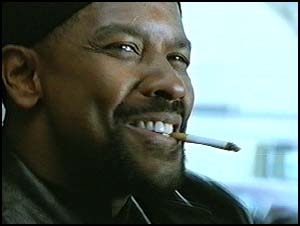
Extreme long-shot:
Used to express the setting of the scene that will be used as the setting throughout a movie (e.g. by showing the "Hollywood" sign in the picture above in an extreme long-shot for a movie, it is clear to the viewer that the movie will be indeed set in Hollywood/Los Angeles).
Tracking shot:
A 'tracking shot' is when a shot is taken by keeping track of something in particular (e.g. if somebody is walking, the camera will keep movement but also keep track of the person's own movements -- this is a tracking shot).Bird's Eye View:
Filmed from a top-down perspective and, once again, more likely to be used to show the atmosphere of the setting (e.g. if a bird's eye view was taken of NYC and Miami -- they would use bird's eye view shots to highlight the gritty streets or the busy metropolis of NYC/humid and sun-filled beaches of Miami etc.)
Low Angle Shot:
Filmed from the ground looking upwards -- for example, a camera shot which is taken of a person but from the ground looking upwards therefore making him appear as some sort of 'giant' or having some form of superiority.
Filmed from a top-down perspective and, once again, more likely to be used to show the atmosphere of the setting (e.g. if a bird's eye view was taken of NYC and Miami -- they would use bird's eye view shots to highlight the gritty streets or the busy metropolis of NYC/humid and sun-filled beaches of Miami etc.)
Low Angle Shot:
Filmed from the ground looking upwards -- for example, a camera shot which is taken of a person but from the ground looking upwards therefore making him appear as some sort of 'giant' or having some form of superiority.
Close-up:

Panning:
Movement of a still/video camera but in the motion of a person shaking their head to signal a "no", meaning that panning is the horizontal movement of a camera.
Movement of a still/video camera but in the motion of a person shaking their head to signal a "no", meaning that panning is the horizontal movement of a camera.

Tilting:
In a simple explanation, tilting is the movement of a still/video camera yet it moves as if a person would when nodding his head (in other words, the camera stays stationary yet it rotates in a vertical plane).

No comments:
Post a Comment